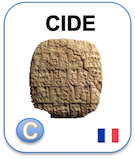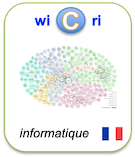Discriminating Tissue Stiffness with a Haptic Catheter: Feeling the Inside of the Beating Heart
Identifieur interne : 001B77 ( Pmc/Checkpoint ); précédent : 001B76; suivant : 001B78Discriminating Tissue Stiffness with a Haptic Catheter: Feeling the Inside of the Beating Heart
Auteurs : Samuel B. Kesner ; Robert D. HoweSource :
- Joint EuroHaptics Conference and Symposium on Haptic Interfaces for Virtual Environment and Teleoperator Systems : World Haptics Conference. World Haptics Conference ; 2011.
Abstract
Catheter devices allow physicians to access the inside of the human body easily and painlessly through natural orifices and vessels. Although catheters allow for the delivery of fluids and drugs, the deployment of devices, and the acquisition of the measurements, they do not allow clinicians to assess the physical properties of tissue inside the body due to the tissue motion and transmission limitations of the catheter devices, including compliance, friction, and backlash. The goal of this research is to increase the tactile information available to physicians during catheter procedures by providing haptic feedback during palpation procedures. To accomplish this goal, we have developed the first motion compensated actuated catheter system that enables haptic perception of fast moving tissue structures. The actuated catheter is instrumented with a distal tip force sensor and a force feedback interface that allows users to adjust the position of the catheter while experiencing the forces on the catheter tip. The efficacy of this device and interface is evaluated through a psychophyisical study comparing how accurately users can differentiate various materials attached to a cardiac motion simulator using the haptic device and a conventional manual catheter. The results demonstrate that haptics improves a user's ability to differentiate material properties and decreases the total number of errors by 50% over the manual catheter system.
Url:
DOI: 10.1109/WHC.2011.5945454
PubMed: 25285321
PubMed Central: 4180400
Affiliations:
Links toward previous steps (curation, corpus...)
Links to Exploration step
PMC:4180400Le document en format XML
<record><TEI><teiHeader><fileDesc><titleStmt><title xml:lang="en">Discriminating Tissue Stiffness with a Haptic Catheter: Feeling the Inside of the Beating Heart</title><author><name sortKey="Kesner, Samuel B" sort="Kesner, Samuel B" uniqKey="Kesner S" first="Samuel B." last="Kesner">Samuel B. Kesner</name><affiliation><nlm:aff id="A1">Harvard School of Engineering and Applied Sciences</nlm:aff></affiliation></author><author><name sortKey="Howe, Robert D" sort="Howe, Robert D" uniqKey="Howe R" first="Robert D." last="Howe">Robert D. Howe</name><affiliation><nlm:aff id="A1">Harvard School of Engineering and Applied Sciences</nlm:aff></affiliation><affiliation><nlm:aff id="A2">Harvard-MIT Division of Health Sciences & Technology</nlm:aff></affiliation></author></titleStmt><publicationStmt><idno type="wicri:source">PMC</idno><idno type="pmid">25285321</idno><idno type="pmc">4180400</idno><idno type="url">http://www.ncbi.nlm.nih.gov/pmc/articles/PMC4180400</idno><idno type="RBID">PMC:4180400</idno><idno type="doi">10.1109/WHC.2011.5945454</idno><date when="2011">2011</date><idno type="wicri:Area/Pmc/Corpus">001864</idno><idno type="wicri:Area/Pmc/Curation">001864</idno><idno type="wicri:Area/Pmc/Checkpoint">001B77</idno></publicationStmt><sourceDesc><biblStruct><analytic><title xml:lang="en" level="a" type="main">Discriminating Tissue Stiffness with a Haptic Catheter: Feeling the Inside of the Beating Heart</title><author><name sortKey="Kesner, Samuel B" sort="Kesner, Samuel B" uniqKey="Kesner S" first="Samuel B." last="Kesner">Samuel B. Kesner</name><affiliation><nlm:aff id="A1">Harvard School of Engineering and Applied Sciences</nlm:aff></affiliation></author><author><name sortKey="Howe, Robert D" sort="Howe, Robert D" uniqKey="Howe R" first="Robert D." last="Howe">Robert D. Howe</name><affiliation><nlm:aff id="A1">Harvard School of Engineering and Applied Sciences</nlm:aff></affiliation><affiliation><nlm:aff id="A2">Harvard-MIT Division of Health Sciences & Technology</nlm:aff></affiliation></author></analytic><series><title level="j">Joint EuroHaptics Conference and Symposium on Haptic Interfaces for Virtual Environment and Teleoperator Systems : World Haptics Conference. World Haptics Conference</title><imprint><date when="2011">2011</date></imprint></series></biblStruct></sourceDesc></fileDesc><profileDesc><textClass></textClass></profileDesc></teiHeader><front><div type="abstract" xml:lang="en"><p id="P1">Catheter devices allow physicians to access the inside of the human body easily and painlessly through natural orifices and vessels. Although catheters allow for the delivery of fluids and drugs, the deployment of devices, and the acquisition of the measurements, they do not allow clinicians to assess the physical properties of tissue inside the body due to the tissue motion and transmission limitations of the catheter devices, including compliance, friction, and backlash. The goal of this research is to increase the tactile information available to physicians during catheter procedures by providing haptic feedback during palpation procedures. To accomplish this goal, we have developed the first motion compensated actuated catheter system that enables haptic perception of fast moving tissue structures. The actuated catheter is instrumented with a distal tip force sensor and a force feedback interface that allows users to adjust the position of the catheter while experiencing the forces on the catheter tip. The efficacy of this device and interface is evaluated through a psychophyisical study comparing how accurately users can differentiate various materials attached to a cardiac motion simulator using the haptic device and a conventional manual catheter. The results demonstrate that haptics improves a user's ability to differentiate material properties and decreases the total number of errors by 50% over the manual catheter system.</p></div></front></TEI><pmc article-type="research-article"><pmc-comment>The publisher of this article does not allow downloading of the full text in XML form.</pmc-comment>
<pmc-dir>properties manuscript</pmc-dir>
<front><journal-meta><journal-id journal-id-type="nlm-journal-id">101568001</journal-id><journal-id journal-id-type="pubmed-jr-id">39505</journal-id><journal-id journal-id-type="nlm-ta">Joint Eurohaptics Conf Symp Haptic Interfaces Virtual Environ Teleoper Syst</journal-id><journal-title-group><journal-title>Joint EuroHaptics Conference and Symposium on Haptic Interfaces for Virtual Environment and Teleoperator Systems : World Haptics Conference. World Haptics Conference</journal-title></journal-title-group></journal-meta><article-meta><article-id pub-id-type="pmid">25285321</article-id><article-id pub-id-type="pmc">4180400</article-id><article-id pub-id-type="doi">10.1109/WHC.2011.5945454</article-id><article-id pub-id-type="manuscript">NIHMS316069</article-id><article-categories><subj-group subj-group-type="heading"><subject>Article</subject></subj-group></article-categories><title-group><article-title>Discriminating Tissue Stiffness with a Haptic Catheter: Feeling the Inside of the Beating Heart</article-title></title-group><contrib-group><contrib contrib-type="author"><name><surname>Kesner</surname><given-names>Samuel B.</given-names></name><xref ref-type="aff" rid="A1">1</xref></contrib><contrib contrib-type="author"><name><surname>Howe</surname><given-names>Robert D.</given-names></name><xref ref-type="aff" rid="A1">1</xref><xref ref-type="aff" rid="A2">2</xref></contrib></contrib-group><aff id="A1"><label>1</label>Harvard School of Engineering and Applied Sciences</aff><aff id="A2"><label>2</label>Harvard-MIT Division of Health Sciences & Technology</aff><author-notes><corresp id="FN1">Harvard School of Eng. and Applied Sciences, 29 Oxford St., Cambridge, MA, 02138, USA. <email>howe@seas.harvard.edu</email></corresp></author-notes><pub-date pub-type="nihms-submitted"><day>14</day><month>9</month><year>2011</year></pub-date><pub-date pub-type="ppub"><year>2011</year></pub-date><pub-date pub-type="pmc-release"><day>01</day><month>10</month><year>2014</year></pub-date><volume>2011</volume><fpage>13</fpage><lpage>18</lpage><pmc-comment>elocation-id from pubmed: 10.1109/WHC.2011.5945454</pmc-comment>
<abstract><p id="P1">Catheter devices allow physicians to access the inside of the human body easily and painlessly through natural orifices and vessels. Although catheters allow for the delivery of fluids and drugs, the deployment of devices, and the acquisition of the measurements, they do not allow clinicians to assess the physical properties of tissue inside the body due to the tissue motion and transmission limitations of the catheter devices, including compliance, friction, and backlash. The goal of this research is to increase the tactile information available to physicians during catheter procedures by providing haptic feedback during palpation procedures. To accomplish this goal, we have developed the first motion compensated actuated catheter system that enables haptic perception of fast moving tissue structures. The actuated catheter is instrumented with a distal tip force sensor and a force feedback interface that allows users to adjust the position of the catheter while experiencing the forces on the catheter tip. The efficacy of this device and interface is evaluated through a psychophyisical study comparing how accurately users can differentiate various materials attached to a cardiac motion simulator using the haptic device and a conventional manual catheter. The results demonstrate that haptics improves a user's ability to differentiate material properties and decreases the total number of errors by 50% over the manual catheter system.</p></abstract><kwd-group><kwd>Haptics</kwd><kwd>Medical Robotics</kwd><kwd>Catheter guidance</kwd><kwd>Psychophysics</kwd></kwd-group></article-meta></front></pmc><affiliations><list></list><tree><noCountry><name sortKey="Howe, Robert D" sort="Howe, Robert D" uniqKey="Howe R" first="Robert D." last="Howe">Robert D. Howe</name><name sortKey="Kesner, Samuel B" sort="Kesner, Samuel B" uniqKey="Kesner S" first="Samuel B." last="Kesner">Samuel B. Kesner</name></noCountry></tree></affiliations></record>Pour manipuler ce document sous Unix (Dilib)
EXPLOR_STEP=$WICRI_ROOT/Ticri/CIDE/explor/HapticV1/Data/Pmc/Checkpoint
HfdSelect -h $EXPLOR_STEP/biblio.hfd -nk 001B77 | SxmlIndent | more
Ou
HfdSelect -h $EXPLOR_AREA/Data/Pmc/Checkpoint/biblio.hfd -nk 001B77 | SxmlIndent | more
Pour mettre un lien sur cette page dans le réseau Wicri
{{Explor lien
|wiki= Ticri/CIDE
|area= HapticV1
|flux= Pmc
|étape= Checkpoint
|type= RBID
|clé= PMC:4180400
|texte= Discriminating Tissue Stiffness with a Haptic Catheter: Feeling the Inside of the Beating Heart
}}
Pour générer des pages wiki
HfdIndexSelect -h $EXPLOR_AREA/Data/Pmc/Checkpoint/RBID.i -Sk "pubmed:25285321" \
| HfdSelect -Kh $EXPLOR_AREA/Data/Pmc/Checkpoint/biblio.hfd \
| NlmPubMed2Wicri -a HapticV1
|
| This area was generated with Dilib version V0.6.23. | |



